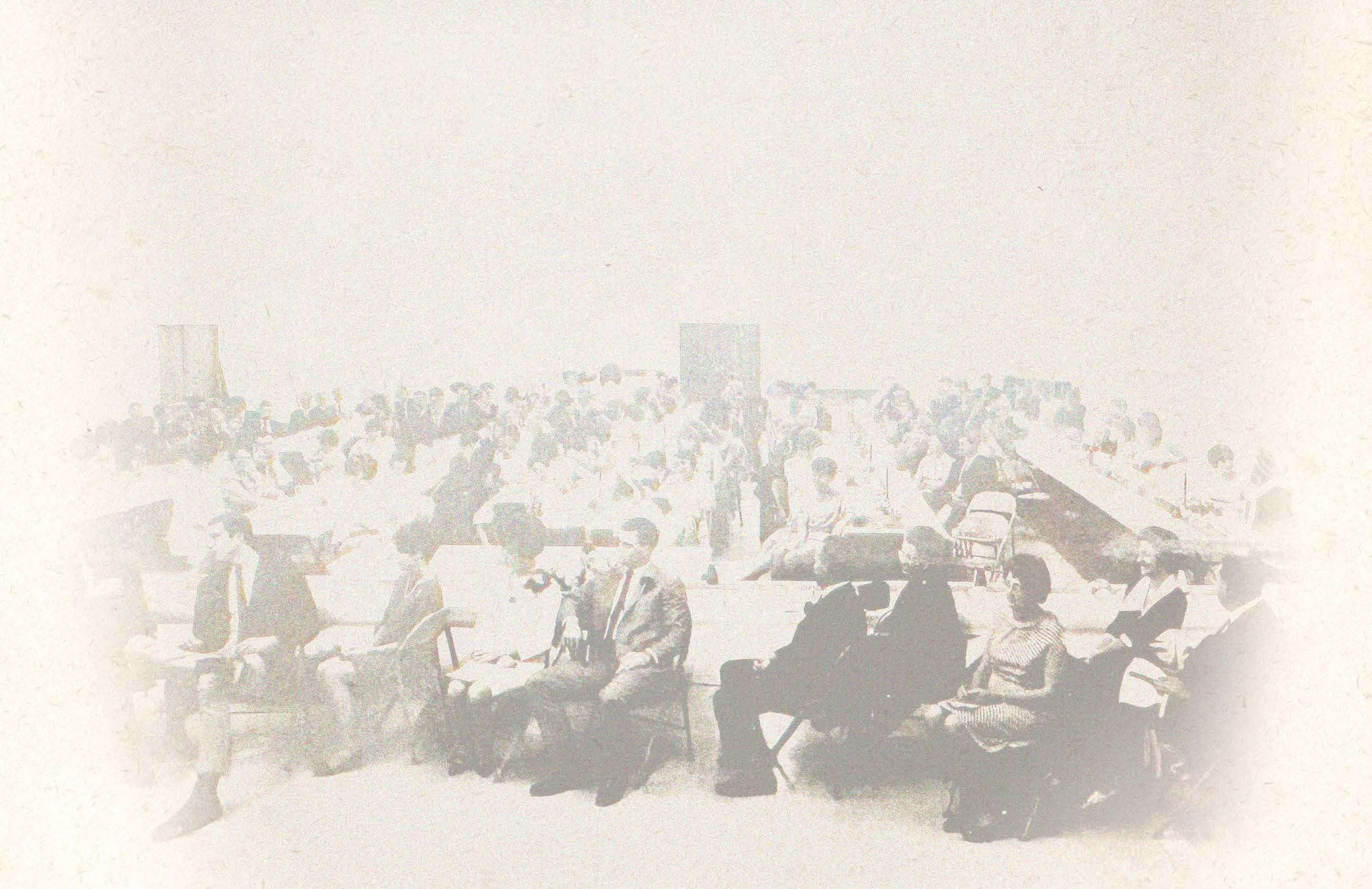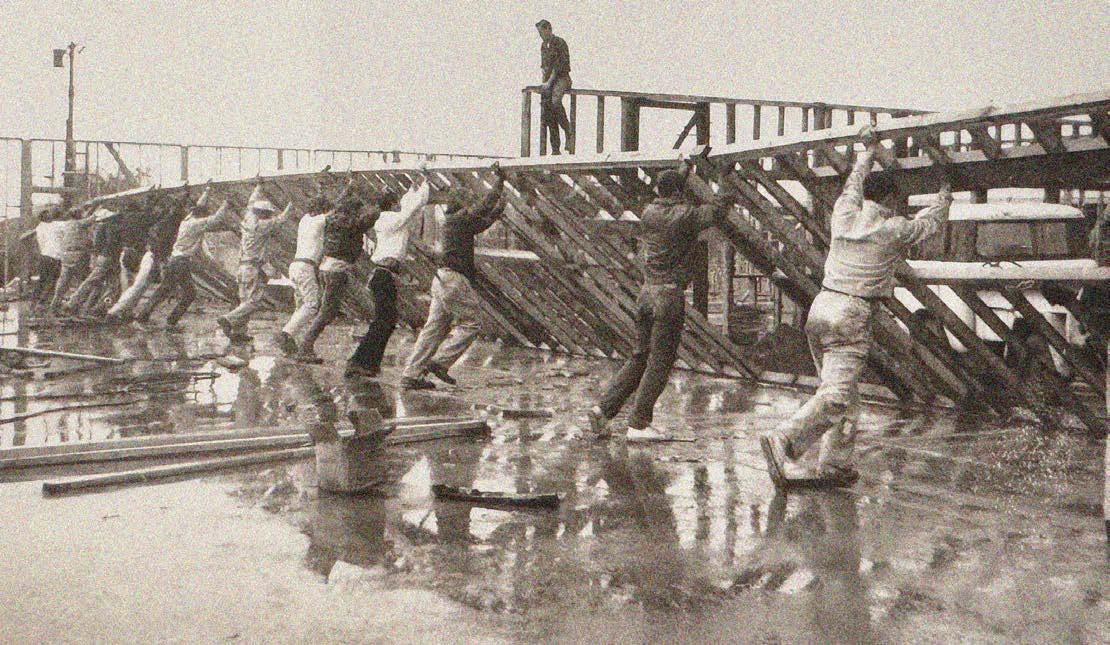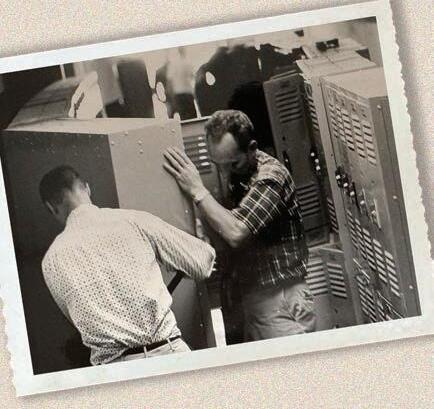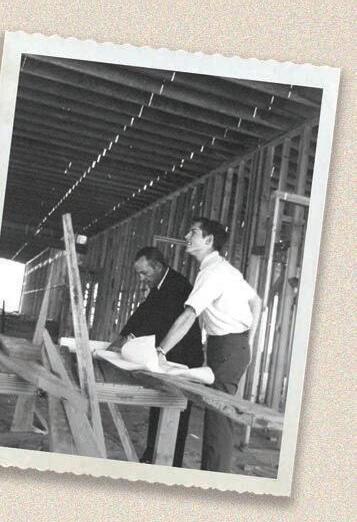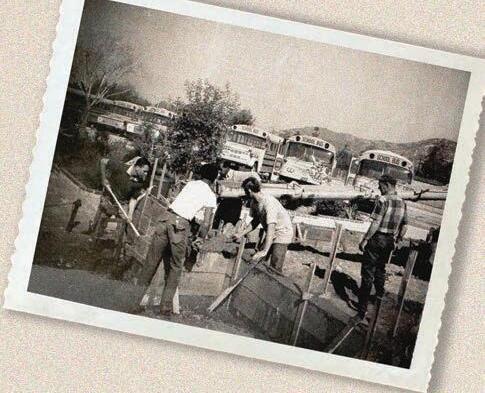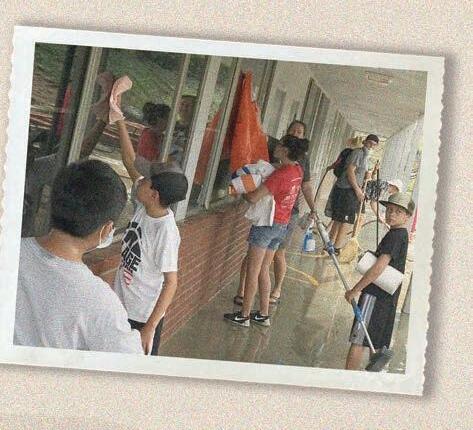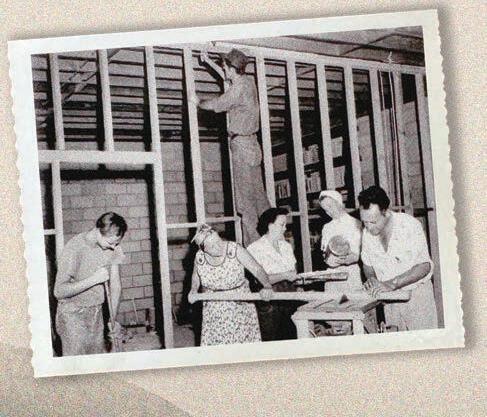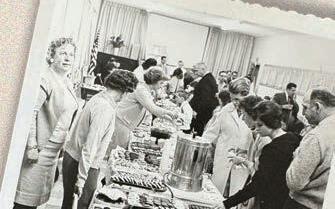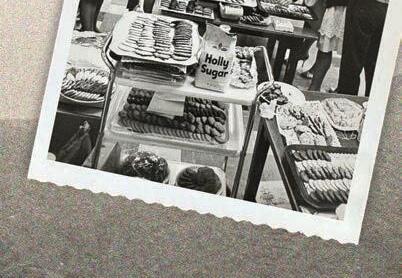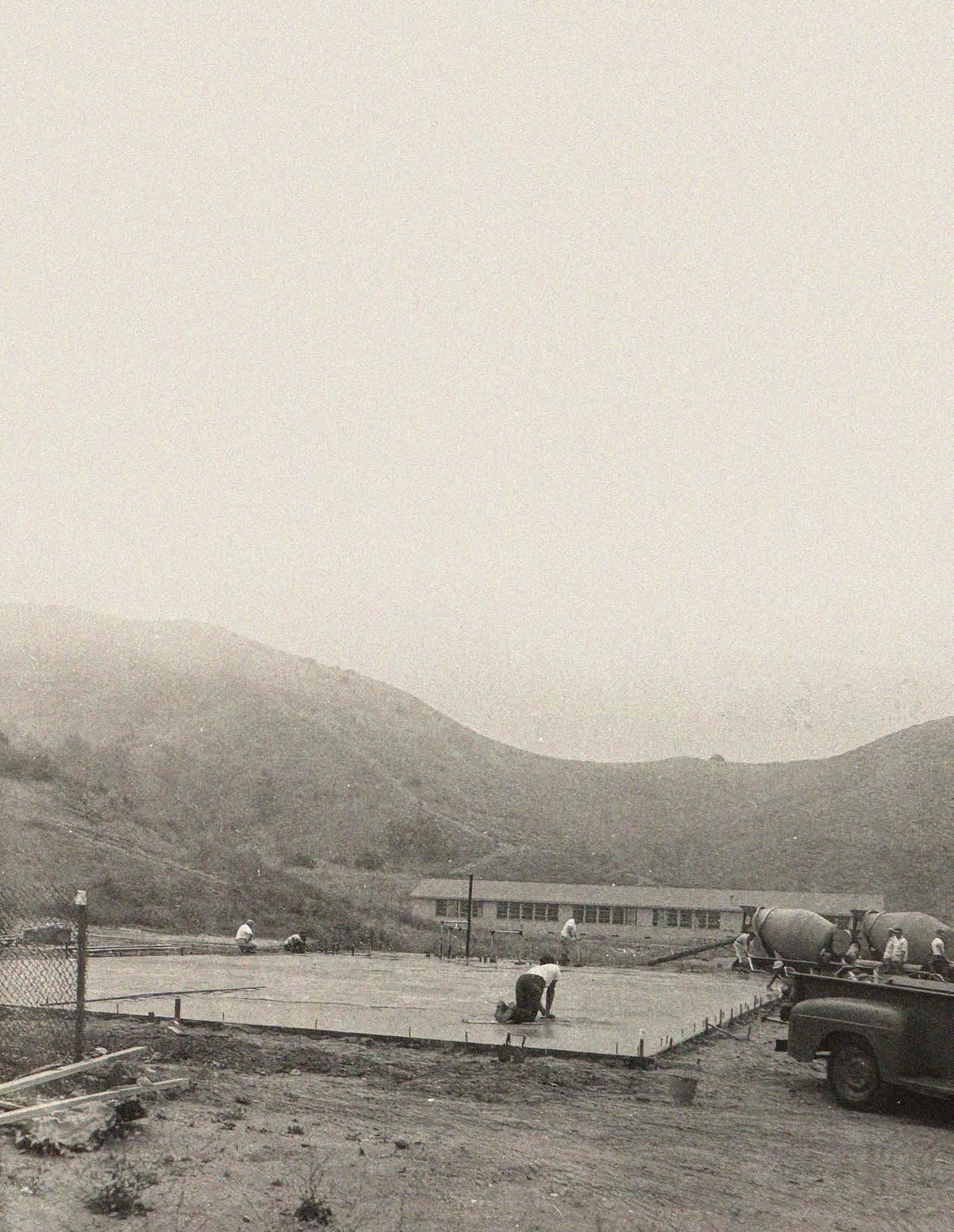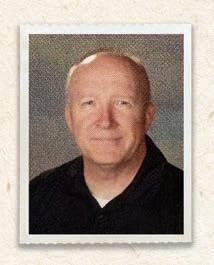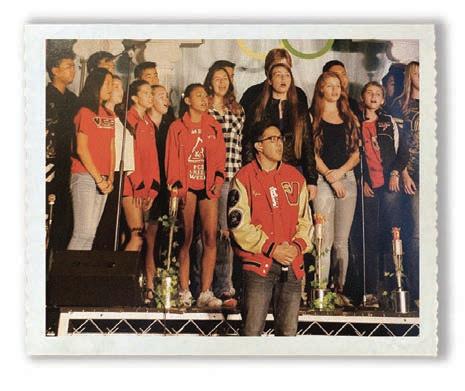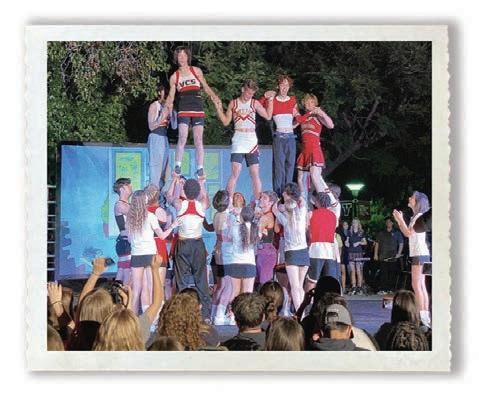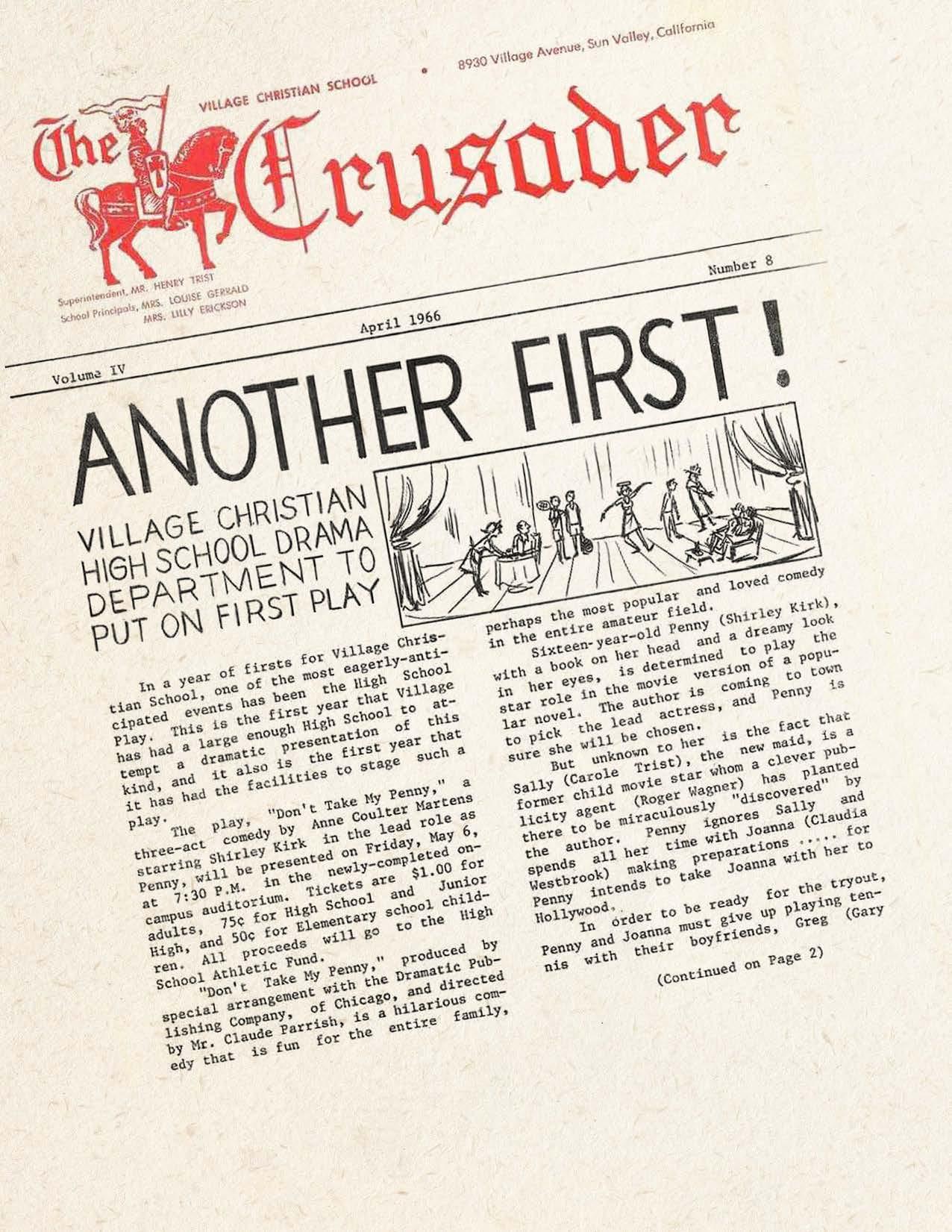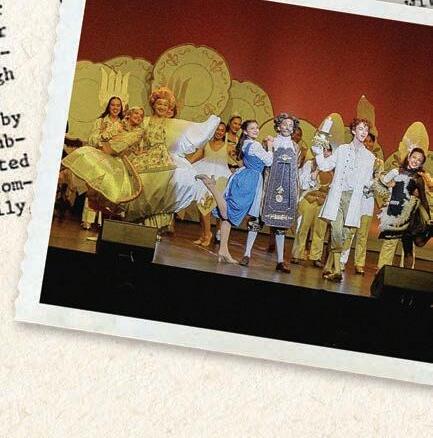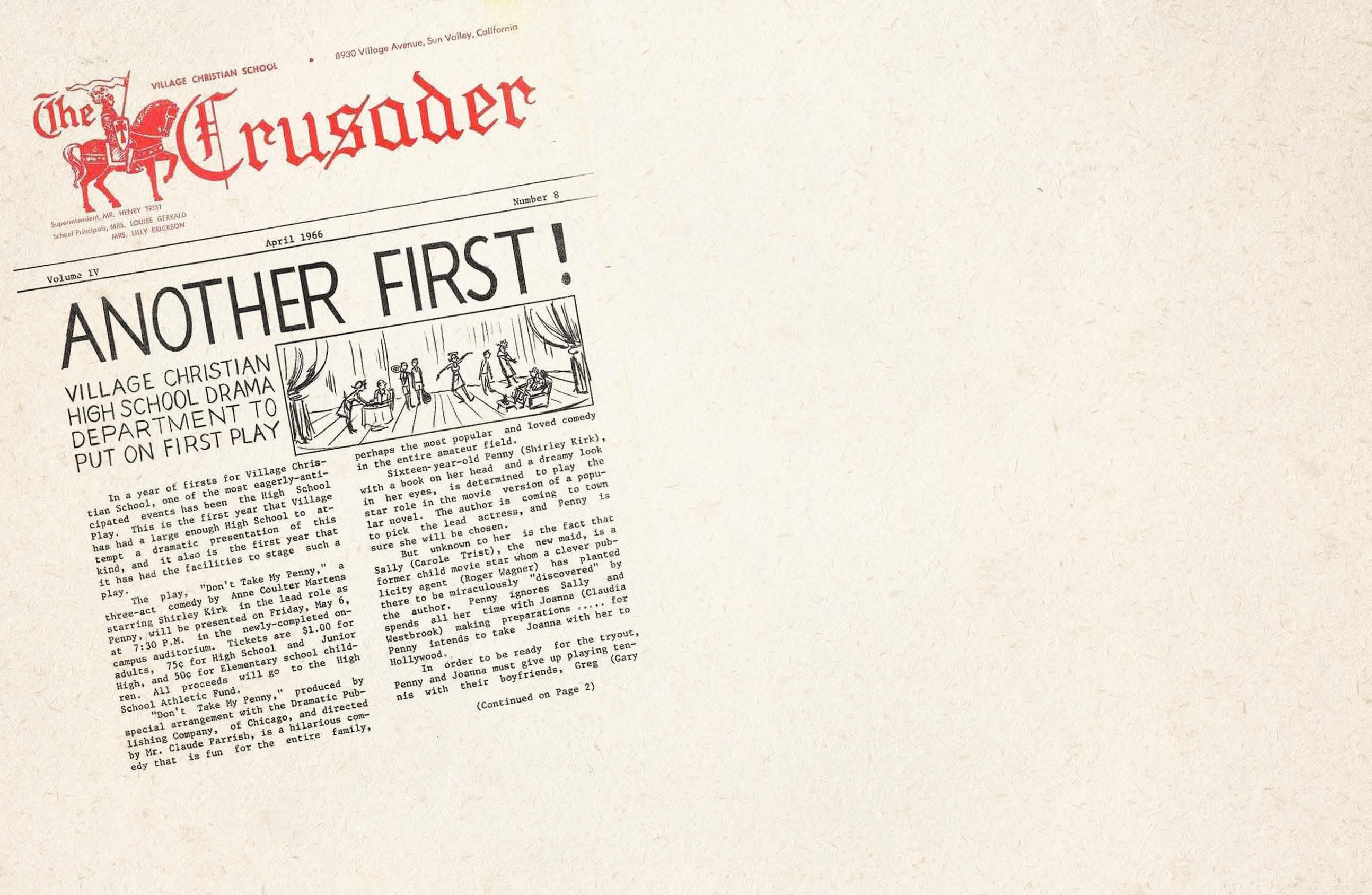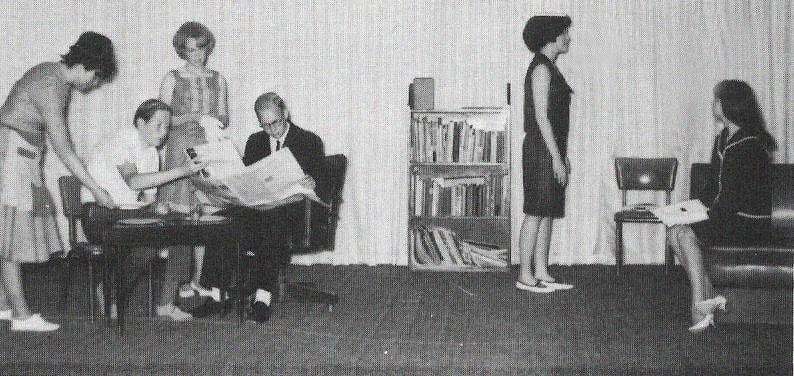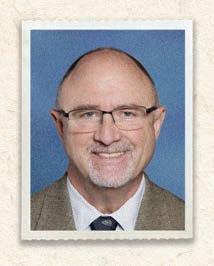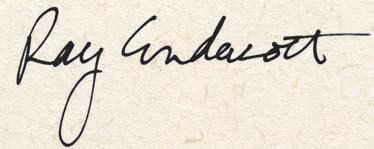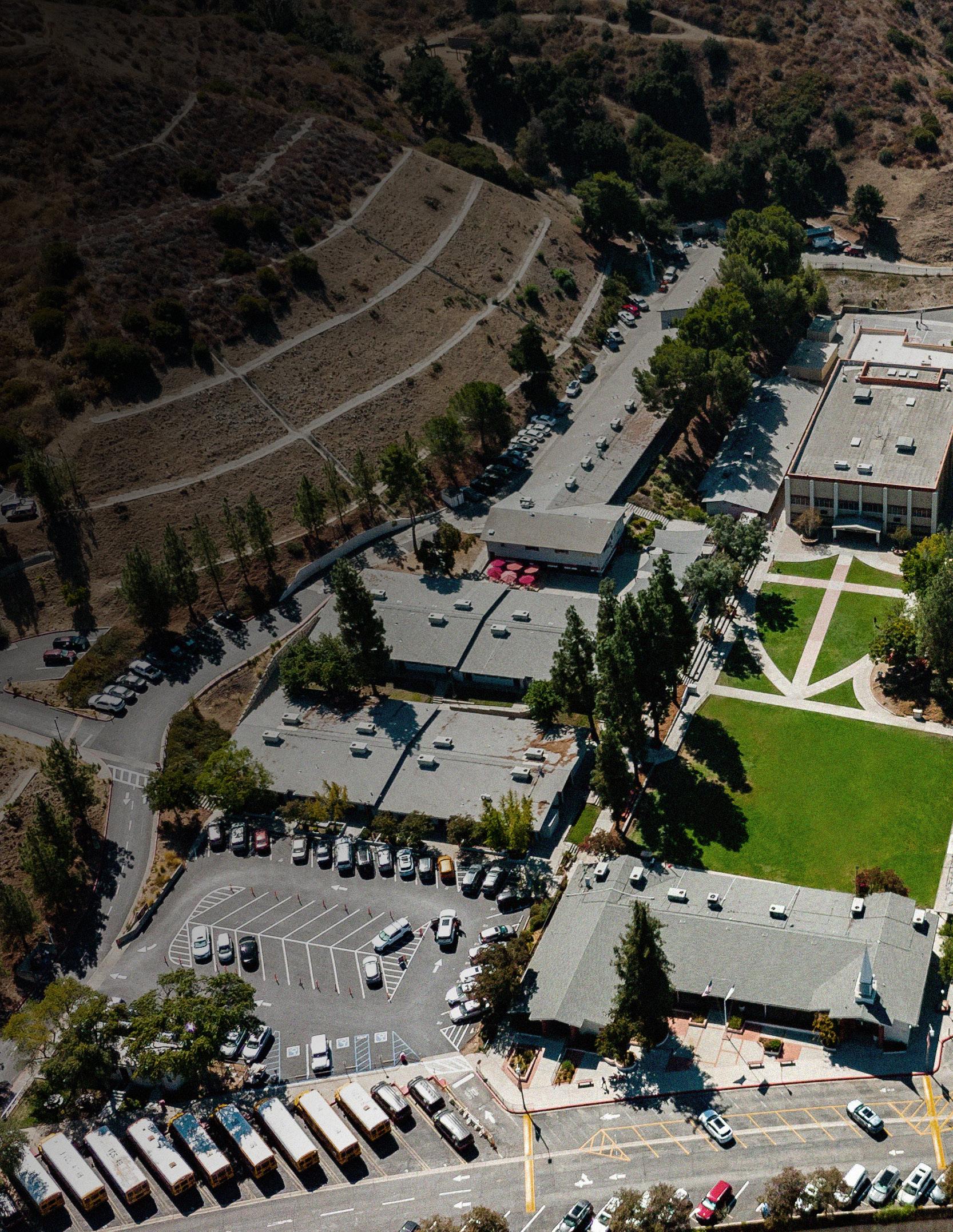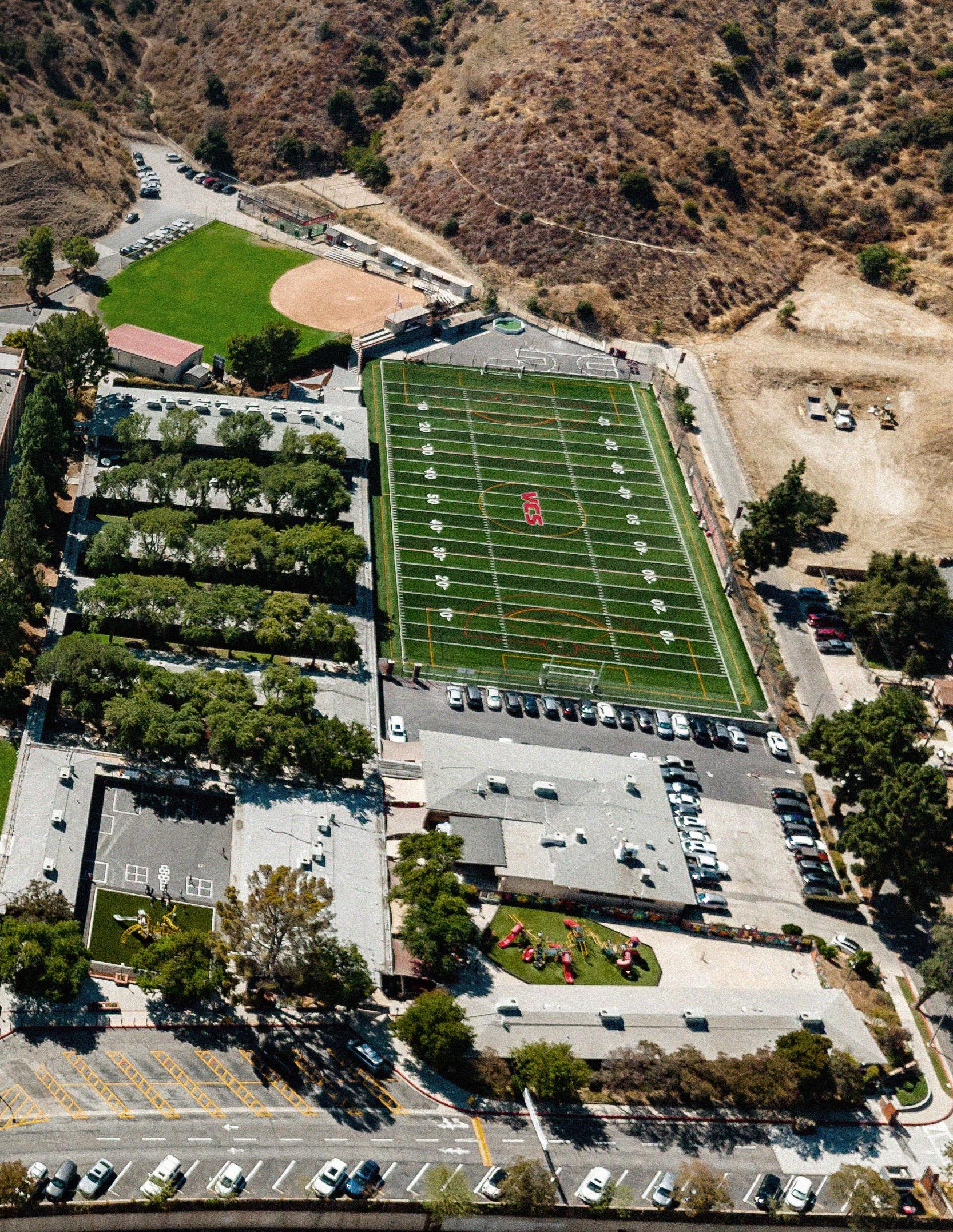


In 1953, teachers Phillis Kasperson and Freda Kruger, as well as board member Don Hamilton, composed and presented the Village Christian School Alma Mater. Since then, the song has been performed at important events, including graduation ceremonies and after athletic contests.


The story of Village Christian School is one of people, perseverance, and God’s faithfulness to protect and provide.
For 75 years, our school has rallied together, overcome challenges, and stewarded God’s gifts, pursuing a calling to reach students for Jesus that began in the halls of a devoted church in Victory Village.
Village has become a life-changing home of Christ-centered education and community, impacting generations of families.
We are grateful for those who have given devoted service to our school.
May God be glorified through the next 75 years.
In November 1958, Village Christian School purchased the building pictured below from Burbank Unified School District, which was moved to the Sun Valley campus in two pieces, becoming the 60 Building.

the VILLAGE VOICE
VCS Marketing Department
Editor | Paul Putignano
Creative Direction | Fontaina Funk
Contributors
Konjoyan, Ray Endacott, Tom Konjoyan, Dave Bethany
Special Thanks

Head of School | Tom Konjoyan
Head of School Tom Konjoyan reflects on the importance of a Christ-centered education.

ere are approximately 180 school days in the year. Around seven hours of school per day. So, in thinking about Village Christian’s 75th anniversary, I calculate that students have had the privilege of being in our caring, Christ-centered learning environment for 13,500 days – and over 94,500 hours.
ough it’s hard to estimate our enrollment over the years, we do know that by 1959, we were the largest Christian School on the West Coast with 545 students, and by 1982, the school had 2,017 students, an all-time high, making it the largest private school (not just Christian School) west of the Mississippi.
While those statistics are impressive, it is more gratifying for me to re ect on over 50,000 students being impacted by our mission over the years. To put this into context, studies by the Jesus School’s movement have estimated that less than 1 percent of the world’s students get the opportunity to learn about the person of Jesus in their schools. Village has been a major force in the spiritual development of students in this little part of the world. All to the glory to God!
What Pastor Gibson began as an outreach to the community has no doubt surpassed his wildest dreams and most fervent of prayers. ose dedicated church members and early parents built the buildings, raised the funds, and made this school happen. I was inspired by the account of Pastor Gibson’s friend, who visited the new proposed site of the initial church and school in the Victory Village section of Burbank, and then made a donation of $1,200 to the young pastor. It was the exact amount of money he needed to buy the property—the rst of many, many miracles God has blessed our school with over the years.
Questions one might ask a er learning about all the success the school has had over the years: What has been the impact on the lives of the students? Did going to a Christ-centered school really matter?
I hope the stories in the pages of this publication will help you answer these questions. As for me, I have witnessed the positive impact in countless students and alumni over my een years of service as only the seventh Head of School in the school’s 75 years. All of our founders’ prayers and hard work have indeed paid o , and it is a distinct honor for my wife, Kelly, and me to play our small part in the legacy of Christian education here at Village Christian School.




Founder | Rev. Phil Gibson
Village Christian School began in the heart of a man whose passion for missions carried him and his wife around the world and ultimately led to changed lives right here at home.
Preparing for the mission eld in Argentina, Rev. Phil and Ruby Gibson were in Mexico studying the language, when threats of World War II forced them to return to a changed America. A sense of camaraderie and patriotism held the country together, yet soldiers and their families grew tired of facing an uncertain future and unanswered questions.
Rev. Gibson pledged to provide a place where his Burbank community, Victory Village, could seek resolution through God’s grace.
God had big plans for this vision.
In search of a local meeting place, Rev. Gibson noticed an inconspicuous corner building in Burbank called Jim Je ries Boxing Barn. He inquired about using the space, and with clean-up as the only stipulation, services began the following Sunday.
e congregation quickly grew and began praying for a more suitable location, when two lots of land in Victory Village became available. Scraping up $125 for a down payment, they wondered how they could raise the additional $1,200 needed.
Hearing of the church’s hope to construct a building, an old friend paid a visit. Interested in the e ort, he wrote out a check for exactly $1,200. Rev. Gibson had never mentioned the cost of the property.
In 1945, Village Church constructed its rst building.
As culture advanced in the late 1940s, Rev. Gibson noticed a shi in public education. He envisioned Village Church developing a Bible-centered school as a missionary outreach. Teachers being the primary evangelists would have a personal relationship with Christ and a steadfast belief in the Bible. Biblical truths integrated into each subject would remind students of God’s ever-present love and guidance in every activity.
Seeds were planted.
Shortly a er founding Village Church, Rev. Gibson heard about a struggling Christian school facing bankruptcy. Assuming the day school’s debt, 36 students and two teachers moved their supplies into Sunday School rooms at Village Church and resumed classes.
e following months brought many nancial burdens and thoughts of abandoning the ill-faring project. Not knowing whether the dream would succeed or fail, the faithful pioneers continued teaching, ministering, and praying.
Meanwhile, Los Angeles Christian Day School, led by Maude Whipple, felt an urgency to separate from its founding church, which had turned to modernistic beliefs.
One Friday, with only faith backing her, Whipple sent home a letter informing families that students would be bussed to the school’s new location the following Monday morning. She knew of no such location, but having heard of a small Christian school in Burbank, she phoned Rev. Gibson.
at weekend, the two agreed to merge, and the teachers and new students were transported to their new location.
e new school, with Whipple as principal, began in September 1949.
In January of 1950, the rst Board of Directors was selected. e school legally operated as Los Angeles Christian School, DBA Village Christian School.
Over 75 years, Rev. Gibson’s heart for ministry has transformed generations of lives and served as a blessing to the community.
God’s faithfulness has endured – as has His plan for Village Christian School.
Both remain as boundless in 2024 as they were in 1949.



AUGUST 25, 1957
VILLAGE CHRISTIAN SCHOOL GROUNDBREAKING CEREMONY
On this landmark day on the Sun Valley campus, Rev. Phil Gibson spoke of the providence of God planting the seed of Christian education in his heart and having shared his dream with the Village Church Trustees in 1946. He paralleled Nehemiah, who was given a vision of a great task—rebuilding the walls of Jerusalem—knowing he could not do it alone. He expressed thanks to those who stood with him, providing support and encouragement over the past ten years. Knowing the building process would take difficult work and continued funding, he charged people to not grow weary; the reward was in the young lives that would come to know the Lord personally and lead their parents to eternal life through Jesus.
The property was surrounded by mountains on three sides and needed leveling. Without any extra funding to purchase necessary machinery, Superintendent Henry Trist mentioned to his Sunday School class the need for $2,000 to purchase used military equipment. Immediately after class, a woman approached him, explaining that she had unexpectedly received $2,000 and knew exactly what should be done with the money.
Leveling began, and the floor slab was poured for the K Building in the first week of January. The next month, 15 volunteers raised the first four walls of the new building. The vision was taking shape, and what began with faith would flourish into a thriving—and expanding—campus.
VCS Leadership | 1949 - 2024
Enduring faith and steadfast leadership have been foundational throughout Village Christian School’s 75-year history.




MAUDE WHIPPLE | 1949-1952 | Superintendent
As head of Los Angeles Christian Day School , Whipple merged with Rev. Gibson’s early Village Church classes to form Village Christian School. As the school’s first principal, she also served as the de facto superintendent, while Gibson was Chairman of the Board.
HENRY TRIST | 1952-1978 | Superintendent
Trist was the first Superintendent formally elected by the school board. Among his many accomplishments, he oversaw the expansion of the school to include High School grades and its relocation to its current location in Sun Valley. He constructed buildings and championed extracurricular activities, including the first athletic teams and first fine arts productions. Trist resigned after serving for 26 pivotal years, laying the foundation for what the school is today.
RICHARD WIEBE | 1978-1981 | Superintendent
Under Wiebe’s direction, Village saw the completion of additional buildings, expanded the High School program, and undertook numerous aesthetic upgrades. Under his leadership, the school obtained accreditation through Western Association of Schools and Colleges, earning a seven-year term in 1980.
JEFF WOODCOCK | 1981-1990 | Superintendent
Woodcock not only oversaw the completion of the gymnasium and other building projects during his time as superintendent, he also brought greater technological advances to the school. Computers and tech-related curriculum were added campus-wide, as was the initial infrastructure to support the new advancements.




DAVE WILSON | 1990-1992 | Interim Superintendent
Among Wilson’s many important roles at Village during his 43-year career, including principal, Spiritual Life Director, teacher, and coach, he also served as the interim Superintendent for two years. During this time, Wilson provided valuable stability as a revered and in uential member of the VCS community.
DR. RON SIPUS | 1992-2010 | Superintendent
During his 18-year tenure, Dr. Sipus continued the ongoing campus improvements of his predecessors, but also oversaw a new era of educational programing and athletic achievement as VCS won its rst CIF Southern Section titles in school history. He added Grandparents Day and restructured Middle School to include grades 6-8. Dr. Sipus supervised the addition of new parking lots, a weight room, and an extensive air conditioning project allowing for AC to be available across the entire campus. Under his leadership, Village was selected as one of the 214 public and private elementary and secondary schools as a National Blue Ribbon School in 2003.

TOM KONJOYAN | 2010-present | Head of School
Following a time of nancial and enrollment instability, Konjoyan re-established growth across all grades and repositioned the school to prominence nationwide with prestigious Council on Educational Standards and Accountability (CESA) membership. Konjoyan launched and trademarked the signature High School academic program, Concentrations®, and innovative mentoring initiative 1:5® Circles of Care, as well as many other programmatic enhancements to curriculum. Under Konjoyan, the school has seen extensive facility upgrades and additions, including the remodel of the gym/Kendall Pavilion to include Kendall Performing Arts Center; the Field of Dreams; and campus-wide improvement projects.
“God’s blessing on Village Christian School through the lives of its graduates as well as the material blessing of dirt, brick, and mortar are ample testimony to His great faithfulness on our behalf. Since we cannot deny His blessings to us, neither can we deny our responsibility to be good stewards of it and to plan adequately to meet future needs. Even as God used faithful men and women in our first generation to carve out a mountain, build buildings, donate land, and make great sacrifices to bring us to this point, so the second generation will require similar commitments in order to carry on.”









































Chairman of the Board | Dave Bethany
Board of Directors Chairman Dave Bethany reflects on his journey from a reluctant new Village parent to a grateful grandpa.
As Village Christian School commemorates its historic 75 th anniversary, I find myself reflecting on the decision I made 26 years ago to enroll my children at Village. At that time, it was a choice made from necessity. My children needed a stronger academic foundation and more enriching co-curricular opportunities with a Christ-centered focus, which, I felt, other schools could not properly provide. With limited options available, I chose to enroll Drew, Ashlee, and Sam at Village.
It did not take long for me to realize that Village was providing far more than I had anticipated or hoped for. Over the subsequent decade, the compassionate community of teachers, coaches, and staff at Village offered invaluable guidance to my children through the trials of adolescence and a difficult time for our family.
I fondly remember Mrs. Pat Cran, our retired cafeteria supervisor, who made it a point to check on Drew daily, offering him a hug and breakfast burritos. Though I am unsure who covered the cost of those burritos, the genuine concern and love invested in my son remain clear in my memory. Numerous teachers and coaches—such as Marty Martin, Tom Nare, Dana Mikels, Don Frost, Camille Martinelli, Dean Lagasse, Ray Endacott, and many others— made profound contributions to my children’s academic and spiritual lives. Their commitment went beyond any employment obligation. It was sacrificial, needed, and so greatly appreciated.
A few years after my youngest graduated high school, I was invited to join the school’s Board of Directors. Although it was an honor, my other commitments—family, business, and ministry—made the decision challenging. Nevertheless, I chose to serve, eager to contribute and give back, which marked the beginning of one of my most fulfilling ministry experiences.
Serving on the board for the past 12 years has been both rewarding and occasionally challenging. I am thankful for the opportunity to collaborate with a dedicated team of board members and administrators, particularly working closely with Mr. Tom Konjoyan. Tom and our administrators are truly gifts to our school community. Navigating challenges, embracing change, and seizing new opportunities alongside Tom and this group of faith-driven leaders has been a profound experience.
Then came the pandemic. During the 2020-2021 years, our ad hoc COVID team of administrators and board members met weekly—sometimes daily—to navigate the ever-changing landscape of conditions and regulations. These were hard times. Exceedingly hard.
However, through our collective prayers and efforts, the Lord blessed us with innovative strategies and resources previously unknown. Our faculty and staff demonstrated unprecedented adaptability and dedication. I believe the growth we are experiencing now is built on the faith and resilience developed during the pandemic. While some schools have struggled or closed, Village has thrived. Reflecting on this tumultuous period, I am grateful it is behind us, though I miss the extraordinary faith we relied on daily.
This school year, once again I am thrilled to have three kids enrolled at Village—not my adult children, but my beautiful grandchildren. My heart swells with gratitude for a school that has not only endured 75 years, but continues to serve each student with Christian care and dedication.
God bless you, Village Christian School. Here’s to another 75 years of providing a Christ-centered education.

VCS Board of Directors | 1949 - 2024





“Here at Village Christian Schools, we are constantly reminded of past history. Not only in new buildings and classes, which have been added almost yearly, but by the lives of young people who today are serving society in ways that make us proud to be part of those lives. It is no wonder as we Expect Great Things from God , we are motivated to Attempt Great Things for God .”

Dick Wimer | Former Chairman of the Board




For decades, many have answered the call to serve on the Board of Directors and steward Village Christian into each new school year. We are eternally grateful for their faithful leadership and heart for the VCS community.



VCS BOARD
CHAIRMEN AND
REV. PHIL GIBSON
DR. EDISON HABEGGER
DR. EARL WESTBROOK
CURTIS FOSTER
R. LLOYD WILSON
PRESIDENTS
REV. KERMIT JEFFERIES
DICK WIMER
DAVE MUXLOW
ROBERT SWANSON
DAVE BETHANY



Legacy Feature | Dave Wilson
Dave Wilson’s passion for people embodied the heart of Village Christian School.
A man of deep passion and limitless love for people, Wilson spent 43 years changing lives at Village.
From his beginnings as a VCS elementary teacher and bus driver, Wilson went on to serve as Principal, Spiritual Life Director, Athletic Director, and Superintendent, while also working in alumni relations, communications, parent relations, and special events.
However, among his most beloved roles was that of coach.
Wilson masterfully connected with student-athletes on the court and field, coaching football, baseball, and basketball.
The former Pacific Bible College (now Azusa Pacific University) basketball player coached at Village for nearly 30 years, but it wasn’t just the Xs and Os, nor the wins and losses.
He was truly a game-changer when it came to people.
“The countless teams he coached, people he invested in inside and outside of the classroom, and even when he became principal, it was always about the kids. Always,” said
Dana (Wilson) Mikels, a VCS lifer, current Middle School principal, and Wilson’s daughter. “In that way, his heart was in tune with why Phil [Gibson] started the school in the first place. In order to get kids to Jesus, you have to have a relationship to get them there.”
The results speak for themselves.
Generations of Crusaders were impacted by Wilson.
As an administrator, his coaching extended to teachers and staff members.
From one-on-one conversations to hand-written alumni birthday cards, Wilson’s care for the VCS community was deeply personal.
He was part of the inaugural class inducted into the VCS Athletics Hall of Fame in 1999, and in 2004, the year he retired, the gym floor was dedicated in his honor.
While he was a master on the basketball court, he was an artist molding young hearts and minds.
Most importantly, he always pointed them to Christ.

“When a parent enrolls their child at Village Christian Schools, they get much more than an excellent academic experience. They become part of the Village family, community, and, yes, part of the Village Way. Dreams are fulfilled, creativity is inspired, hearts are nurtured, challenges are appropriately presented, the expression of love is experienced in many different ways, and a huge road sign is given to each student, pointing them in the direction of true life with meaning and purpose.”



VCS Foundations | Committment to Service
Village Christian School has always been a reflection of its founder’s missionary heart.
Rev. Phil Gibson traveled the world leading people to the Lord. However, his most profound impact may have been right here at home, when the school opened as an outreach to the community.
His passion for ministry never waned.
Missions and service are woven into the fabric of VCS, complementing academic learning, Biblical teaching, and enriching programs to equip students to be the hands and feet of Jesus.
Beginning in the school’s early years, every classroom was assigned a missionary by Village Church’s Missions Committee to learn about and support. Students were taught about their missionary’s geographical location as well as the language and customs of those countries.
There were even occasional campus visits by the missionaries to talk to students about the work God was doing around the world.
Funds were regularly raised within each classroom and through Village Church to support projects and needs across the globe, while partnerships were established with organizations,
including Southwest Indian School in 1963.
Southwest Indian School was a Christian boarding school located in Glendale, Arizona and a missionary project of World Gospel Missions. An all-school drive to collect donations of clothes and other gifts which were packed up and driven to the school on Thanksgiving Day.
Former Principal Vic Frendt often volunteered to drive the donations given each year to the school.
Before long, students and staff were also serving abroad, taking trips to Bolivia, Guatemala, Tijuana, Ometepec, and Argentina, to name a few, to work with organizations, Christian schools, and churches.
For more than 30 years, the Dean Lagasse-led trip to Mexicali alongside Azusa Pacific University was that outlet for the many in the Village community.
After joining APU’s trip in 1984 with a family member, Lagasse wanted to bring the experience to Village. He was joined by one student, Eden Palmer, the first year.
“I remember walking around campus
praying, ‘OK Lord, who do you want me to ask?’” Lagasse said. “We took 10 kids the second year. Then [participation] just kind of exploded.”
Village volunteers worked in the kitchens, and as participation grew by the hundreds, they branched out to local churches and orphanages. Students led worship and helped with construction projects—and they often came home changed, notably in 2018, when Lagasse said 40 VCS students were baptized.
The final trip to Mexicali was in 2019, but the legacy lives on through annual visits to Puente de Amistad, which began in 2022.
Right here at home, outreach to such places as Nevada to work with local Native American tribes and to Central California to prepare food through Gleanings for the Hungry gave VCS special ways to serve.
For younger students, Thanksgiving food drives, crafts for foster children, and cards for military veterans were opportunities to impact hearts.
In 2008, VCS became a collection center for Operation Christmas Child, in association with Samaritan’s Purse.

According to longtime organizer Lisa Sullivan, the school processed more than 33,000 shoeboxes lled with gi s, treats, and hygiene items bound for children in need in one year alone.
Students were always on board to pack boxes, load trucks, and help in any way they could.
“Without them even knowing it, it made them aware and opened their hearts,” Sullivan said. “Going shopping with parents and not keeping gi s for themselves, but thinking of another child, they have to be generous and kind. ey were so proud that they were able to do something. If you show them a need or how they can help, they are willing. Very few kids didn’t want to get involved.”
In 2012, VCS launched an ambitious campus-wide service project called VCServes. With the directive to be the eyes, ears, and hands of Jesus to see, hear, and do what the Lord was calling, the entire school participated in a week of service that saw students partner with nonpro ts across the Greater Los Angeles area.
“ e school year is jam packed with calendar stu ,” said George Ratchford, who served as Spiritual Life Director
during that time. “For the school to say they’re going to focus a lot of energy, and a week of academics into service and going out into the community, I think is pretty awesome, because it shows that the community cares.”
As COVID-related regulations with many participating organizations changed in 2020, the VCServes e ort was integrated into campus life through class service projects and ongoing relationships with local nonpro ts.
Students have also initiated and participated in a variety of service projects on their own.
In recent years, two such causes were the Dressember campaign to raise money to end human tra cking and Team World Vision to run the Los Angeles Marathon and raise funds to provide clean water in developing nations around the world.
e opportunities keep coming, re ecting the quote from 18th century missionary William Carey found inside both Village Church and the chapel at VCS.
“Attempt great things for God, expect great things from God.”
e words are as important now as they were 75 years ago. As is the ongoing commitment to service and missions fostered at VCS.






Walker (1991)
Village graduate Paul Walker’s legacy extends far beyond his films—a heart for service emblematic of VCS’ history and mission.
Paul Walker’s star power was at an all-time high when the world was rocked by his tragic death in 2013.
e actor was one of the faces of the Fast & Furious franchise and had gained international notoriety.
But Walker was more than just the characters he portrayed on the big screen.
Much more.
e 1991 Village Christian School graduate’s popularity was also rivaled by his heart for service, a passion he turned into Reach Out Worldwide, an international relief organization that carries on his legacy today.
“In January of 2010, a er a massive earthquake devastated Haiti, Paul spontaneously organized a relief team that responded to the disaster,” reads ROWW’s o cial website.
“On the trip, Paul saw a gap between the availability of skilled resources and the requirement for such personnel in post-disaster situations. Upon returning from Haiti, ROWW was established with the purpose of ful lling this unmet need. ROWW continues to respond internationally to natural disasters worldwide ranging from earthquakes to hurricanes.”
Whether providing aid across the globe or responding to local emergencies, including oods, res, and tornadoes right here in the United States, ROWW is continuing the heartfelt work reminiscent of the young man VCS knew when he
walked its halls in Sun Valley.
“He loved his life at Village. It was perfect for him,” said Paul’s mother, Cheryl. “He loved playing football and basketball and did really well at both. He loved his teachers, and they loved him and really cared about him. ey cared not only about his grades, but about his heart and taught him what the Bible said was true.”
One of those teachers was Don Frost.
“I had him in Bible 10. He was always a very humble guy. You would never know he was on TV at that time,” Frost said. “He always had a smile and kind demeanor about him. Paul was a joy to have in class and to be around. He was a very loyal friend and active in extracurricular events.”
Former teacher, coach, and Mexicali outreach leader Dean Lagasse could also attest to the down-to-earth nature of Walker, who came to VCS in h grade and was voted “Best Hair” as a senior by the Class of 1991.
“He was a fantastic athlete, humble, and hard working,” Lagasse said. “He was a good friend, who valued relationships, and in spite of his fame and good looks, he was just a regular guy. He was always respectful and loved his family, which included the VCS family.”
To this day, visitors and prospective families still regularly recognize VCS as Walker’s alma mater, and for years, the school sent students to ROWW’s location in Pasadena as part of VCServes.
“He had the best friends [at Village]. ey had such a great camaraderie between them, and kept each other accountable and grounded. If he did something dumb, his friends would tell him to knock it o , and he respected them for that. So many people would cater to him, but his friends kept him grounded,” Cheryl said. “I’m forever grateful for all Village did for Paul and our family, and still my closest friends are from Village.”
Some of those friends later went on relief trips with Paul through ROWW.
To date, the nonpro t is run by his brother, Cody, and has completed 82 deployments in 12 countries, raising nearly $10.5 million in charitable donations to support relief e orts.
To honor Paul’s legacy, ROWW encourages supporters to get out and do good in their communities, as well as through FuelFest events that are geared toward the auto community that has supported Walker and the nonpro t.
“It would have been far easier and cheaper for Paul to put his face on an existing organization and check in from time to time, but he didn’t,” said ROWW’s website. “He chose to get dropped o from a helicopter in Haiti, during a very unstable time, without a plan, in hopes to personally help those in need.”
ough his popularity remains, it’s his heart for service that Village aims to instill in future generations of VCS graduates.











“The real thrill was seeing changed lives and many boys and girls come to accept Jesus as their Savior. After I left the school, I had many former students tell me how the school had influenced and changed their lives.”




From its humble beginnings, the Bible Bowl ignited passion and established a longtime cross-town rivalry.
The drum beat starts and students’ begin to march through campus.
Before long, “Beat LAB” is echoing through Village Christian’s hallways as excitement builds for one of the San Fernando Valley’s most storied rivalries, which spans 40 years of dramatic finishes, epic winning streaks, and passionate support.
The rivalry between Village and Los Angeles Baptist (now Heritage Christian) began in 1982 when VCS transitioned from eight-man football to 11-man and joined the Knights in the Alpha League.
The Crusaders won the first-ever meeting between the two schools 14-6. LAB responded the next year with a 3-2 victory in 1983.
Within a few years, the game had a name and a trophy – the Bible Bowl was born.
Former VCS head football coach Mark Bates, a Village alum (1983) and Athletics Hall of Fame inductee, was serving as the head coach at LAB when he and then-Crusaders head coach Mike Plaisance purchased the first Bible Bowl trophy.
“We just wanted to make it something positive for the two schools,” Bates said. “It grew out of a friendly rivalry of kids going to the same church but different schools and finally getting to play each other. Because of the rivalry, the records always went out the window.”
Dating back to 1988, the score is engraved on the trophy, which is then
housed at the winning school.
From 2001 to 2013, that school was Village Christian with the Crusaders winning 12 of 13 matchups and eight in a row beginning in 2006.
“It was awesome – the back and forth. They didn’t like us. We didn’t like them. It was that kind of a feeling,” said former head football coach and Athletic Director Marty Martin, also a VCS Athletics Hall of Fame inductee.
“It’s one of those things that unless you’re in it, you really don’t understand it. The first time we beat them [in 2001], the kids were going crazy. There’s a song by Thin Lizzy –‘The Boys are Back in Town.’ That kind of became the theme because we got the trophy back.”
VCS currently leads the series 19-16.
In 2003, the rivalry added a new layer when the two teams met in the CIF Southern Section Division XII championship game.
“First of all, you really don’t want to play a team twice in a year, but it was OK because it was LAB,” said Martin, who coached the Crusaders at that time. “We wanted to be able to leave no doubt.”
Village won 42-20.
The rivalry grew stronger with each season and from sport to sport. After all, that passion wasn’t limited to football.
VCS girls volleyball took a major step forward in 1986 with a landmark win over the Knights. The victory
ended a 56-game losing streak to the state-ranked cross-town rivals and ushered in a new era for the volleyball program.
The Crusaders were on the rise and would go on to win the Alpha League title that year.
To date, the program has won 16 league championships, three CIFSS titles, state and regional crowns, all while consistently sending student-athletes to top NCAA Division I programs across the nation.
In 2012, LAB merged with Hillcrest Christian and became Heritage Christian School. However, athletes and fans remained just as passionate about beating the Warriors.
In recent years, that competitiveness was realized on the basketball court with epic battles between VCS and HCS, which had become two of the area’s premier programs.
While the Crusaders’ home court is named after VCS luminary Dave Wilson, Heritage now plays its games on Kendrick Family Court, named after their longtime Head of School, David Kendrick, a VCS alum (1971) and VCS Athletics Hall of Fame inductee.
The ties run deep and the tradition is rich.
While students no longer chant “Beat LAB” throughout campus, you never know what you’ll hear in the stands.
And you never know what will happen when the two teams meet.


Alumni Feature | Sam Schmidt (1982)
VCS Lifer Sam Schmidt continues to push the bounds of the human spirit and overcome unimaginable obstacles.
Few events in sports have the name recognition of the Indianapolis 500.
e checkered ag. e fabled bricks. e iconic milk for the winner a er whipping around the world-famous race track at over 170 miles per hour.
Winning the prestigious event is a dream, and it was within sight for VCS lifer Sam Schmidt, a third-year IndyCar Series driver, as he took the lead in 1999.
“ at was the ultimate; sort of a mission accomplished,” says Schmidt, having won in Vegas before placing 30th at the Indy 500. “ e beautiful wife. e two kids. Living the dream. And as sometimes happens in life, that’s when it goes upside down.”
A year later – the unthinkable.
Schmidt hit the wall exiting turn two at Walt Disney World Speedway in Orlando, Fla.
He was knocked unconscious and didn’t breathe for four minutes. He woke up on a ventilator, paralyzed from the neck down.
“I don’t really remember anything for the rst couple weeks,” he says.
Schmidt’s trajectory in the racing world was sky high a er taking up car racing in 1992. He won races and championships at each level before ascending to IndyCar in 1997.
But Schmidt’s story isn’t a tale of what could have been; it’s one of what comes next.
“You have a choice to make. What is your new goal in life?” he says. “Obviously, there was something you wanted to do, but something got in the way. But what is that path and what is that purpose?”
Since the accident, he has rede ned that purpose to becoming an inspirational pioneer, refocusing his unrivaled determination to advocacy, innovation, and unrelenting courage through race team ownership, the formation of his nonpro t, and extensive testing and research.
“Now that I’ve had 25 years to look back on it, I was very fortunate to be a professional athlete and fought really hard to accomplish everything,” he says. “So, to me, it’s just another challenge in that realm – to overcome paralysis.”

Shortly a er the accident, Schmidt established the Sam Schmidt Paralysis Foundation, later renamed Conquer Paralysis Now, “with a commitment to nd a cure for paralysis and help give independence to individuals living with neurological conditions,” says the nonpro t’s o cial website.
In 2001, he formed his rst race team, Sam Schmidt Motorsports.
“ e thing that got me up in the morning was racing,” he says. “If I couldn’t be a driver, I wanted to be an owner.”
Moreover, he wanted to keep moving forward – for his kids, Savannah and Spencer.
“I needed to be an example,” he says. “I wanted to see them grow up and to be part of their lives.”
In 2004, Sam Schmidt Motorsports won its rst championship. To date, the team has won seven titles and 80 races.
“ ey saw the work ethic and what it takes to do these things,” he says. Nothing is spontaneous.”
And nothing ever has been.
Schmidt began attending Village Christian in Kindergarten.
When he was in fifth grade, his father, Marv, was off-road racing in Mexico, when he himself was injured trying to avoid someone going the wrong way on the course.
“His brain slapped up against his skull on the left side and paralyzed his left side,” Sam Schmidt recalls, adding that his father experienced blood clotting that also affected him like a bad stroke.
Village gave him an outlet and a community that rallied around him.
As a student, Schmidt played football, basketball, and baseball, stealing 50 bases in one season, including home eight times, he says.
In 2003, the 1982 graduate was inducted into the VCS Athletics Hall of Fame.
“Village gave me the opportunity to focus on sports and become really

good at something and learn discipline and all these things that you need later in life that you don’t realize you’re getting,” he says. “The relationships, the foundation of faith, weekly chapels, the foundation was really good.”
That foundation continues to pay dividends.
In 2021, Schmidt sold 75 percent of the team to McLaren F1, giving him more time and resources to pour into his foundation, he says.
And since his accident, he’s even been back in the driver’s seat.
After years of working with Arrow Motorsport out of Denver, Colo., Schmidt raced the legendary Mario Andretti in a semi-autonomous Corvette Z06 that he could control with his head and mouth.
The location? Indianapolis.
He reached speeds in excess of 200 mph.
“Attitude is a choice,” Schmidt says. “When something happens, don’t get me wrong, it helps to have a strong faith and a strong family and have community that can lift you up, but at the end of the day, you have to make it happen.”
His next obstacle was a little more personal.
In 2021, Savannah got engaged. Schmidt was determined.
He worked with Arrow on a special exoskeleton, he says, surprising his daughter with an emotional dance at her wedding.

“There wasn’t a dry eye in the house,” he says.
It has been more than 11 years since Schmidt began working with Arrow’s internally – and serendipitously –code-named SAM (semi-autonomous mobility) Project.
He continues to push forward and find new ways to inspire.
No matter what came before and certainly whatever obstacles lay ahead.
Just try to tell him otherwise.
“I realize now 25 years later, it’s so I can look anyone in the eye and tell them, ‘Unless you’re on a ventilator, you’re not worse than me,’” he says. “’No excuses.’”


1999 | BOB KLOPFENSTEIN
Class of 1967
Basketball, Football
1999 | DAVE WILSON
Coach, Athletic Director
2000 | RANDY KLOPFENSTEIN
Class of 1969
Basketball, Football
2000 | BARRIE MALCOLM
Class of 1970 Basketball, Football
2001 | GARY LINK
Class of 1971 Basketball, Track
2001 | DAVID KENDRICK
Class of 1971 Basketball, Football, Baseball
2002 | RICHARD ROTH
Class of 1974
Basketball, Football
2002 | EUGENE TWILLEAGER
Class of 1973 Football, Track
2002 | SIMONE CESH
Class of 1987
Track, Cross Country
2003 | WAYNE EDWARDS
Class of 1982
Baseball, Basketball
2003 | SAM SCHMIDT
Class of 1982
Baseball, Basketball, Football
2004 | MARK BATES
Class of 1983
Football, Baseball
2004 | JAMES EDWARDS
Class of 1985
Basketball, Football
2004 | BERNIE MILLS
Class of 1983
Basketball, Football, Track

2005 | STEVE LOVETT
Class of 1985
Track, Football
2005 | DOUG SCHOERBORN
Class of 1985
Football, Track
2005 | MIKE PLAISANCE
Coach, Athletic Director
2006 | KARIN YOHO
Class of 1988 Volleyball, Track
2006 | HEATHER HEPBURN
Class of 1989
Soccer, Softball
2010 | JEFF CORTEZ
Class of 1990
Football, Soccer, Baseball
2010 | IGNACIO BRACHE
Class of 1995
Football, Soccer
2010 | LINDY JAMES
Class of 1996
Basketball, Volleyball, Softball
2011 | SCOTT DANIELSON
CLASS OF 1989 Football, Soccer, Baseball
2011 | CRAIG HUDSPETH
CLASS OF 1989 Football, Baseball
2012 | TRISHA PALMQUIST
Class of 1995 Basketball, Track
2012 | DAVID GUSTAFSON
Class of 1995 Basketball, Baseball
2013 | MARTY MARTIN
Coach, Athletic Director
2014 | BRIAN GIBSON
Coach
2015 | CHAD EVERETT
Class of 1992
Football
2015 | RYAN COADY
Class of 1989
Cross Country
2016 | DEAN LAGASSE
Coach
2017 | RACHEL (TAYLOR) KENYON
Class of 2008
Volleyball
2018 | LAUREN (NYDAM) HOCKETT
Class of 2004
Softball
2019 | ALBERTO QUINTANA
Class of 2000
Baseball, Football, Soccer
2021 | DUSTIN BURKE
Class of 2004
Football
2021 | JASON CHRISTENSEN
Class of 2004
Football
2022 | BRYAN ALBERTS
Class of 2014
Basketball
2022 | MARSALIS JOHNSON
Class of 2014
Basketball
2023 | BILL SCHNOBRICH
Coach
2023 | MIKE RICHARDS
Class of 2003
Volleyball
2024 | HENRY TRIST
Superintendent, Coach

